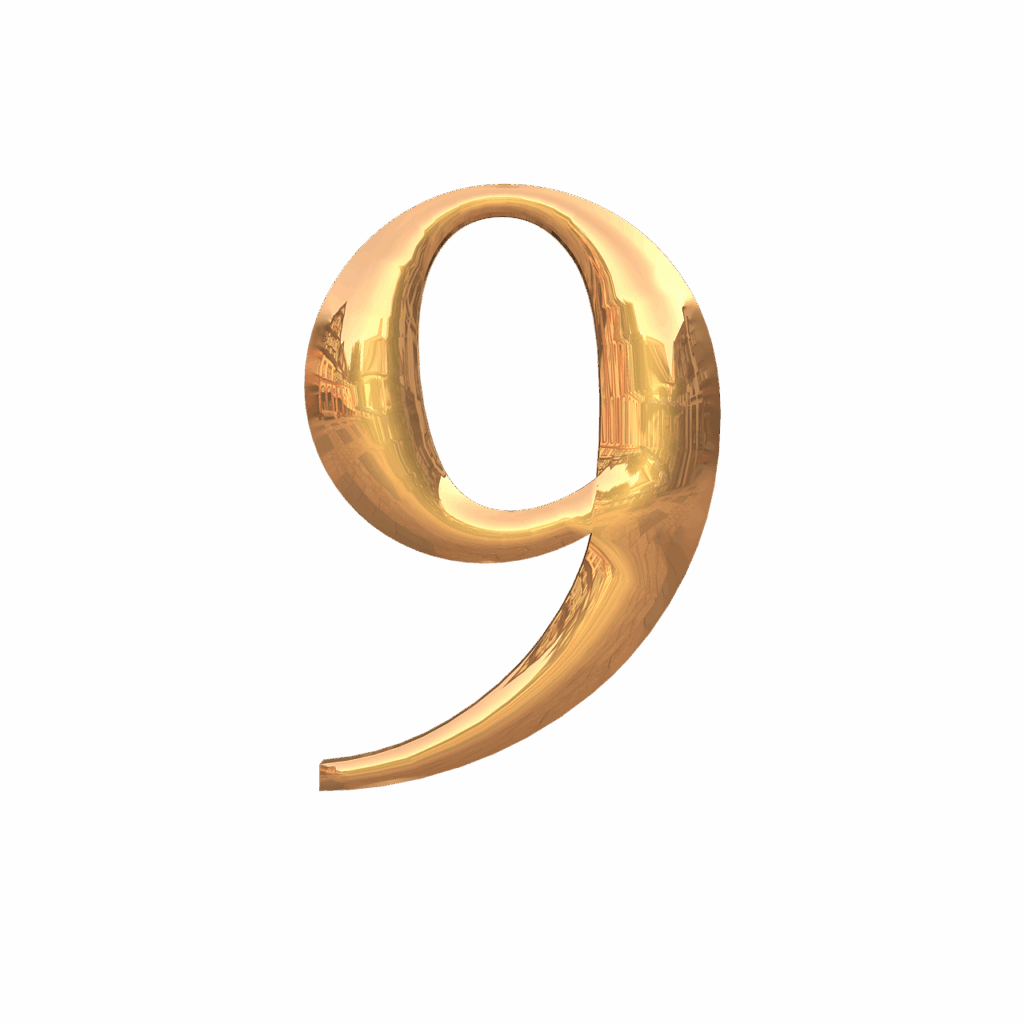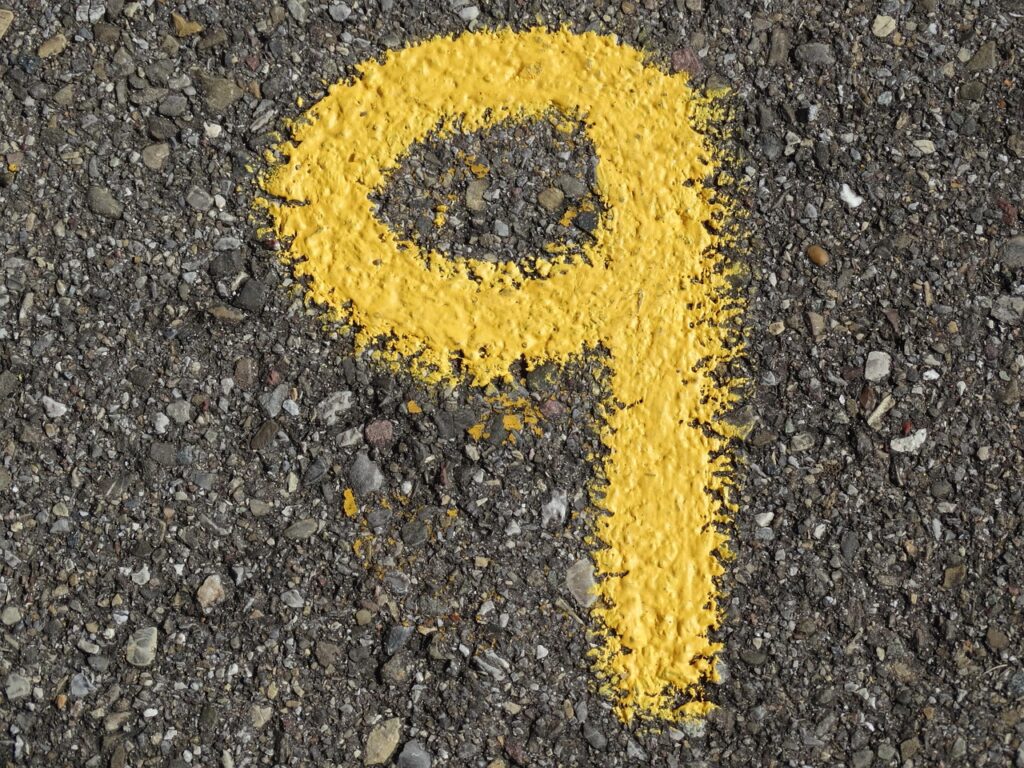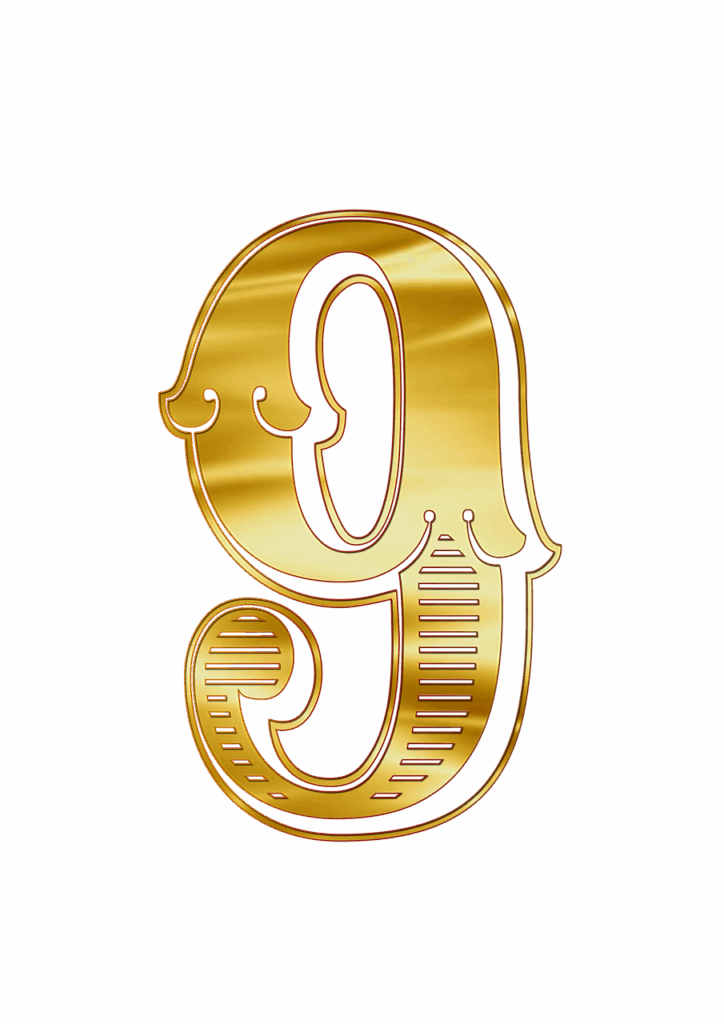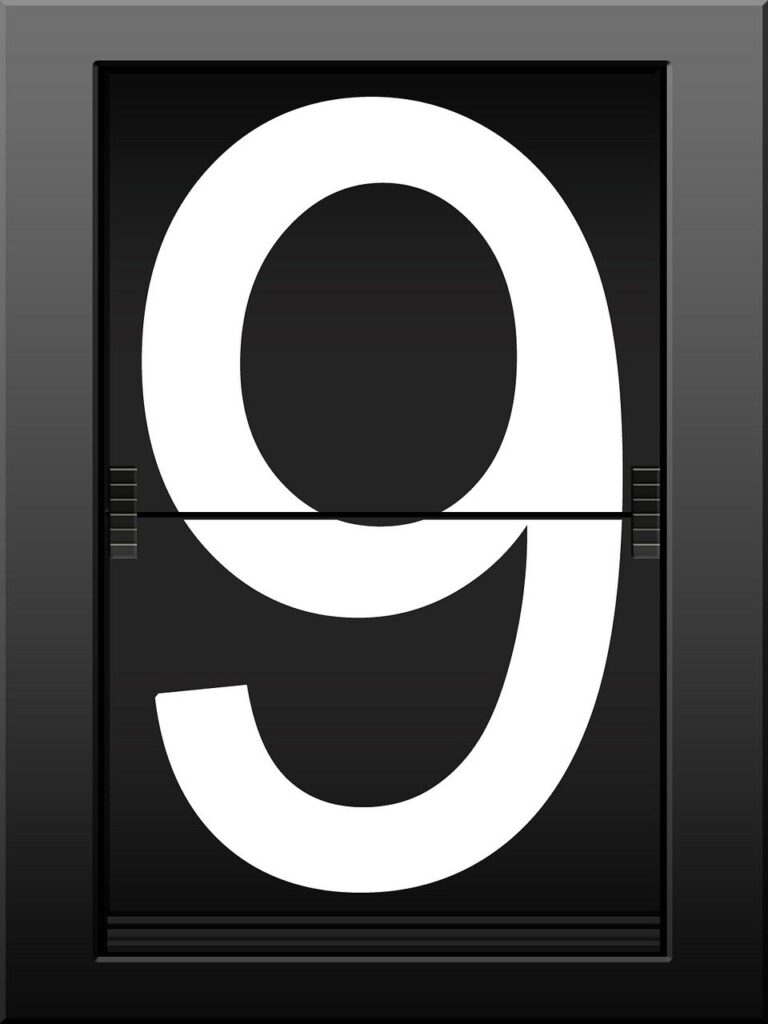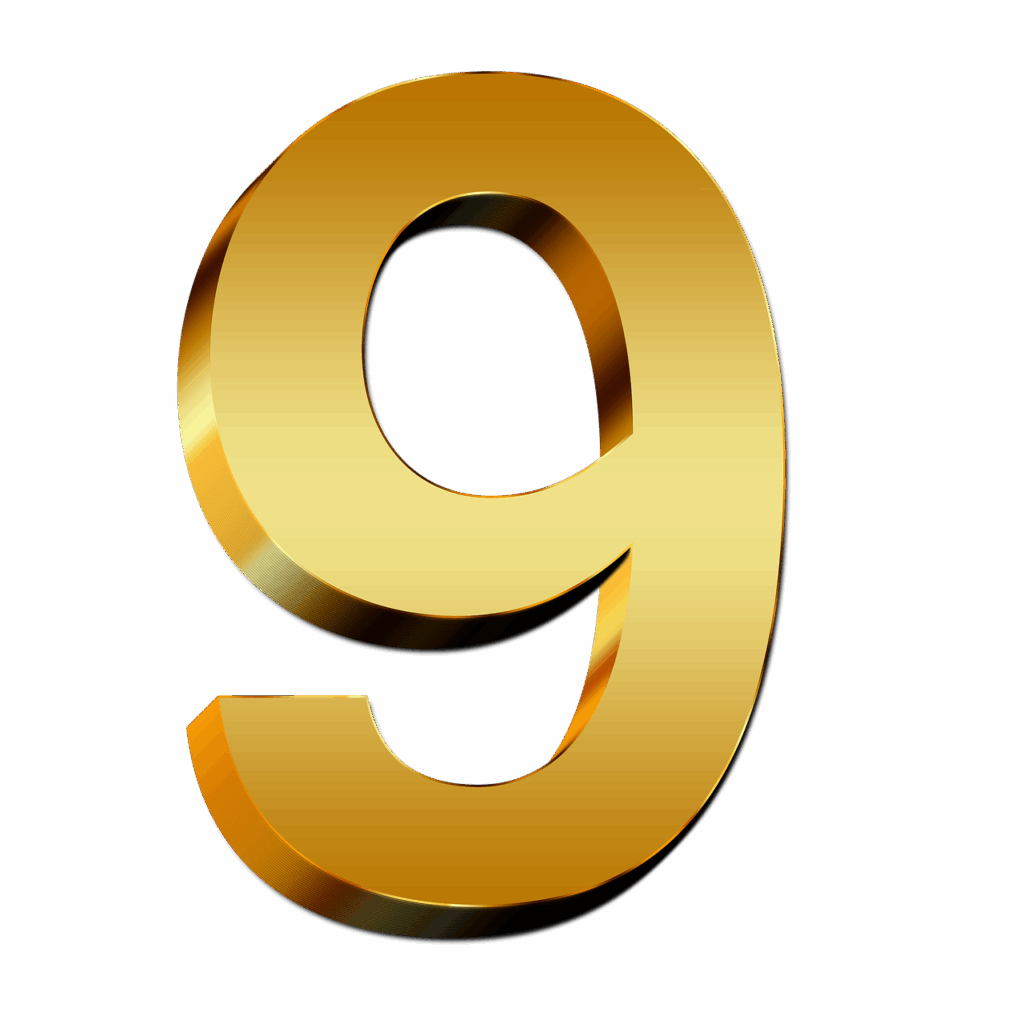The world of numbers is far more than mere quantities; it’s a tapestry woven with history, culture, and profound mysteries. Among these digits, the number nine stands out, not just as the final single-digit integer in our decimal system, but as a universal enigma whose influence permeates nearly every aspect of human endeavor and natural phenomena. From the ancient scribes who first shaped its glyph to the complex algorithms that define our digital age, nine consistently emerges as a figure of unique significance and captivating properties. It challenges our perceptions and invites us to look beyond its simple numerical value.
Prepare to embark on an exhilarating journey through the multifaceted domain of the number nine. We’ll peel back the layers of its historical evolution, marvel at its mind-bending mathematical characteristics, and uncover its unexpected appearances in the scientific world, technological advancements, and even the subtle art of probability. This isn’t just a casual stroll through numerical trivia; it’s a deep, authoritative exploration designed to ignite your passion for the hidden mechanics of our universe, revealing how this singular digit drives countless systems and shapes our understanding.
Just as a finely-tuned engine reveals its power through meticulous engineering, the number nine showcases its profound impact through intricate patterns and consistent presence. Its story is one of enduring relevance, a testament to its intrinsic power that continues to unfold across disciplines. Get ready to have your perspective on this familiar digit irrevocably transformed as we uncover the true might and mystique of the number nine, a mathematical superstar truly worthy of our undivided attention.
1. **The Odyssey of a Glyph: Tracing the Evolution of the Number Nine** Every digit we use today carries a rich and often surprising history. The number nine’s journey from ancient symbols to its familiar form is a fascinating tale of cultural exchange and graphical evolution. According to Georges Ifrah, the origin of these integers can be traced directly to ancient Indian civilization, demonstrating the profound mathematical innovations from that region. These foundational numbers were adopted by subsequent civilizations, alongside zero, forming the bedrock of modern numeration.
Initially, around 300 BC, early Indian scribes crafted a digit nine similar to the modern closing question mark, but without its bottom dot. This early form was a practical representation that soon began to evolve. The Kshtrapa, Andhra, and Gupta empires introduced a curve to the bottom vertical line, making it resemble a ‘3’. This transformation reflected a continuous process of refinement in numerical representation.
The Nagari script then took this evolving form further, extending the bottom stroke to create a circle that enclosed the ‘3-look-alike’. This ingenious design mirrored the way the ‘@’ symbol encapsulates a lowercase ‘a’, creating a visually distinct and memorable character. This innovative approach laid the groundwork for further modifications, pushing the glyph towards its eventual modern appearance.
Over centuries, the enclosing circle in the Nagari form grew larger, with its line extending downwards beyond the circle, while the internal ‘3-look-alike’ diminished. Eventually, all that remained was a mere squiggle. Arab scholars then simplified the form by connecting this squiggle directly to the downward stroke at the middle. Subsequent European changes were primarily cosmetic, demonstrating the remarkable stability of the Arab interpretation and its lasting global impact. Today, while most modern typefaces give the digit nine an ascender, typefaces with text figures often feature a descender.
2. **The Fundamental Identity of Nine: More Than Just a Number** Beyond its intriguing visual evolution, the number nine possesses a fundamental identity that establishes its pivotal role within the numerical system. It is the natural number following eight and preceding ten, serving as a crucial bridge in our counting sequence. As an integer, nine stands as a whole number, and as a cardinal number, it is intrinsically used for counting discrete quantities. Its identity as a real number places it within the vast continuum of numbers, distinguished from imaginary numbers.
What truly sets nine apart in the decimal system is its status as the highest single-digit number. This position gives it a unique authority, symbolizing the culmination of our fundamental counting units before transitioning to two-digit numbers. This distinction signifies a completion, a full cycle within the foundational structure of our numerical language. It marks the boundary of single-digit representation, preparing the numerical canvas for the complexities of larger values.
Furthermore, nine is classified as a composite number, a designation speaking to its internal structure. Unlike prime numbers, nine can be neatly divided by numbers other than just one and nine – specifically, by three. Its proper divisors are one and three, underscoring its composite nature. This characteristic is precisely why it can be expressed as three times three, or three squared (3²), making it the third square number in the sequence of perfect squares. This inherent structure allows it to participate in various mathematical relationships and patterns.
Read more about: Beyond the Screen: Deconstructing the Animated World of ‘9’ and the Enduring Power of the Number Nine
3. **The Digital Root Phenomenon: Unveiling Nine’s Mathematical Magic** One of the most captivating properties of the number nine lies in its extraordinary relationship with digital roots, a phenomenon that feels almost like mathematical magic. In base 10, a number is flawlessly divisible by nine if, and only if, its digital root is nine. This remarkable rule provides an incredibly quick and elegant method for testing divisibility without resorting to long division, a testament to the elegant patterns woven into the fabric of our number system, driven by nine’s unique position as one less than the base.
Consider this intriguing trick: if you take nine and multiply it by any whole number, excluding zero, then repeatedly add the digits of the resulting product until you arrive at a single digit, that final digit will always be nine. For instance, 2 multiplied by 9 yields 18; adding its digits (1 + 8) gives 9. Similarly, 3 multiplied by 9 is 27, and 2 + 7 equals 9. Even with larger numbers, the pattern holds true, making nine a true mathematical superstar.
This property extends beyond simple multiplication. The difference between any base-10 positive integer and the sum of its own digits will always be a whole multiple of nine. Take 41: the sum of its digits is 5, and 41 minus 5 equals 36. The digital root of 36 (3 + 6) is 9, confirming its divisibility by nine. This intricate relationship means that the “casting out nines” method, known since the twelfth century, offers a quick way to verify calculations.
Furthermore, the principle holds true for transpositions: subtracting two base-10 positive integers that are transpositions of each other invariably yields a number that is a whole multiple of nine. For example, 41 minus 14 results in 27, whose digital root is 9. This consistency is evident even with numbers of varying lengths. The only other number that shares this specific digital root property in base 10 is three, reinforcing the unique position of nine, which is the square of three.

4. **Delving Deeper: Nine’s Advanced Mathematical Attributes** The allure of the number nine extends beyond basic arithmetic, venturing into more complex and specialized areas of mathematics where its unique characteristics shine brightly. As we explore its advanced attributes, we uncover further layers of its mathematical identity, revealing connections that underscore its importance in number theory. Nine is notably classified as a Motzkin number, an integer sequence that counts the number of ways to draw non-intersecting chords between points on a circle, showcasing its unexpected relevance in combinatorics.
Moreover, nine holds the distinction of being the first composite lucky number. Lucky numbers are generated by a sieve similar to the Sieve of Eratosthenes. For a composite number to appear first in this sequence highlights an interesting blend of divisibility and positional significance. This peculiar characteristic adds another fascinating dimension to its identity, differentiating it from other composite numbers.
The relationship between eight and nine also presents a compelling detail: they form a Ruth-Aaron pair under the second definition, which rigorously counts repeated prime factors. This specific pairing is relatively rare in number theory, demonstrating a profound connection between these consecutive integers through their prime factorizations. Such intricate relationships are what make number theory so captivating.
Furthermore, nine is an exponential factorial, expressed as 9 = 3^(2^1). This classification links it to a specific sequence of numbers where the exponents themselves are powers, highlighting its construction from foundational prime numbers in a hierarchical manner. This formulation reveals the elegance with which nine can be built from simpler components, showcasing its structure through a unique exponential relationship.
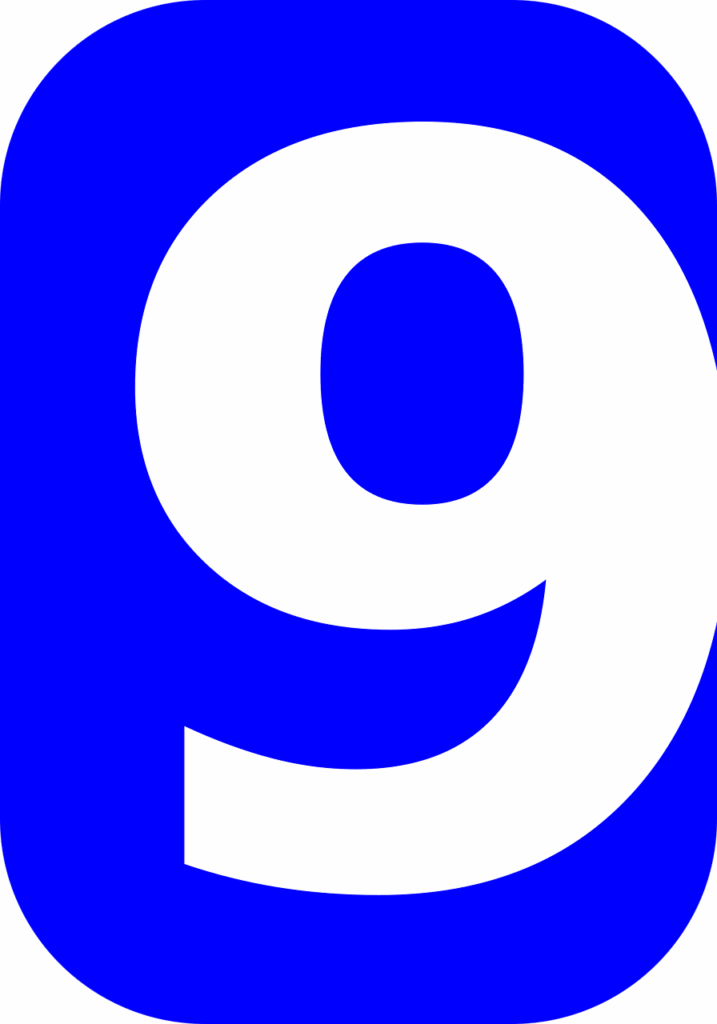
5. **Nine Across Systems: Its Identity in Diverse Numeral Bases** Our familiar decimal system (base 10) may grant nine its role as the highest single digit, but its identity shifts across different numeral systems, each offering a fresh perspective on its value. Exploring how nine is represented in various bases provides compelling insight into the fundamental principles of positional notation and the universality of numerical concepts. This comparative approach reveals the underlying engineering of counting.
In the binary system (base 2), the most fundamental of all digital systems, nine is represented as 1001. This simple sequence of ones and zeros effectively encapsulates its value. Moving to the ternary system (base 3), nine becomes 100, which literally means 1 * 3^2 + 0 * 3^1 + 0 * 3^0, perfectly reflecting nine’s nature as the third square number.
The quaternary system (base 4) represents nine as 21, indicating two units of four and one unit of one. In the quinary system (base 5), it is 14. These representations reveal the increasing compactness of numerical expression as the base increases. In the senary system (base 6), nine is 13, and in the septenary system (base 7), it is 12. Each of these forms, while appearing different, precisely conveys the same magnitude, illustrating the flexibility and power of positional notation.
As we approach base eight, the octal system, nine is represented as 11. This signifies one unit of eight and one unit of one. Crucially, in the novenary system (base 9), nine takes on its most succinct representation: 10. This is because “10” in any base always means the value of the base itself. This elegant simplicity highlights the intrinsic relationship between a number and its own base. For any base larger than nine, nine retains its standard glyph ‘9’, reinforcing its universal recognition.

6. **Nine in the Cosmos and the Lab: Scientific Encounters** The influence of the number nine isn’t confined to abstract mathematics; it surfaces remarkably in the tangible realms of science, from the microscopic world of atoms to the vast expanse of the cosmos. Its appearances here are fundamental aspects of natural law and biological processes, reflecting an underlying order that often goes unnoticed. These scientific facts underscore the number’s pervasive role in understanding our physical world.
In chemistry, nine claims a fundamental position as the atomic number of fluorine. This highly reactive and electronegative element owes its identity and placement on the periodic table to this specific number of protons. The atomic number defines an element’s chemical properties and behavior, making nine a cornerstone in the architecture of matter. Furthermore, an alkane hydrocarbon with nine carbon atoms is aptly named nonane, embedding the number into the lexicon of molecular structures.
Biology also presents a prominent and universally understood association with the number nine: a human pregnancy normally spans approximately nine months. This period of gestation is a critical biological benchmark, marking the duration of human development from conception to birth. This natural cycle, a cornerstone of human life, firmly places the number nine in the biological rhythms of our existence.
Shifting our gaze to the heavens, nine once held a significant place in astronomy. Before 2006, when Pluto was reclassified as a dwarf planet, our solar system was commonly understood to comprise nine planets. This count shaped generations of astronomical education and popular understanding. While the classification has changed, the historical presence of nine planets remains a memorable point in astronomy, demonstrating how numerical conventions can evolve with scientific discovery.
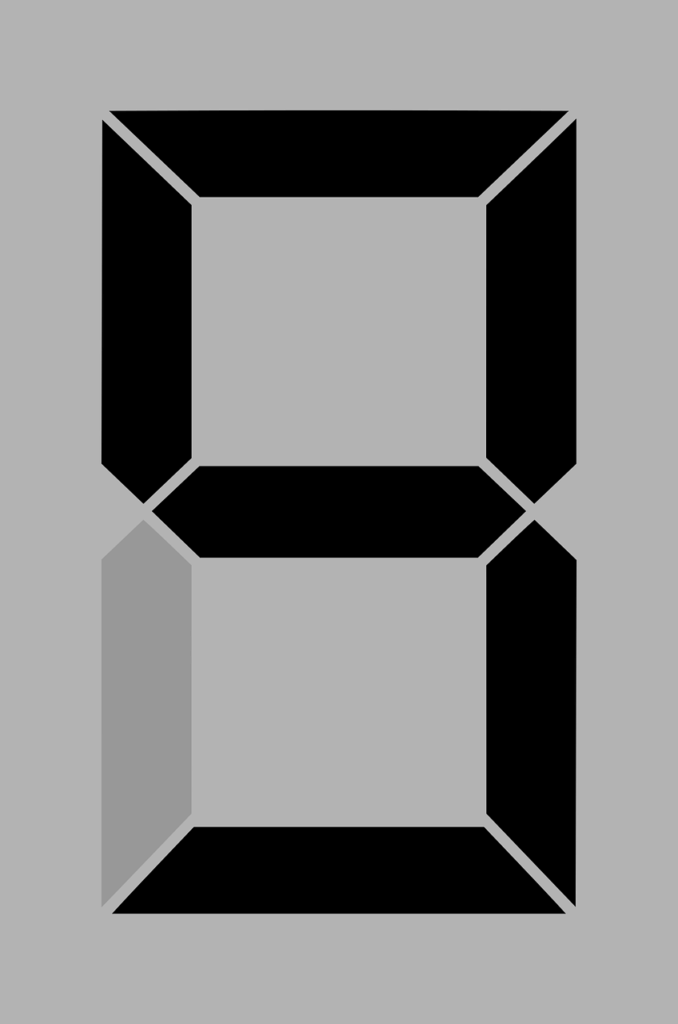
7. **Digital Precision and Probabilistic Measures: Nine in Technology and Uptime** In our increasingly data-driven world, the number nine takes on critical roles in technology and the precise language of probability. Far from being a mere abstract concept, nine becomes a benchmark for reliability, a unit of measurement for certainty, and a fundamental identifier within digital standards. Its presence in these fields underscores its practical importance in ensuring the functionality and precision of modern systems.
In probability calculations, “nines” is employed as a logarithmic measure of an event’s likelihood. This is defined as the negative of the base-10 logarithm of the probability of the event’s complement. For example, an event with a 99 percent chance has an unlikelihood of 1 percent (0.01), which translates to “2 nines of probability” (-log10 0.01 = 2). This elegant system allows for clear expression of extremely high probabilities, invaluable in scientific and engineering contexts.
This probabilistic measure extends into crucial technological domains, particularly in defining the reliability and availability of complex systems. “Uptime” in computer system administration is often quantified in “nines”—referring to the number of nines in the percentage of time a system is operational. “Five nines” (99.999 percent) availability, for instance, is an industry benchmark signifying an incredibly robust system with a total downtime of no more than five minutes per year.
Beyond reliability metrics, nine serves as a specific identifier in various technical standards. ISO 9, from the International Organization for Standardization, dictates the transliteration of Cyrillic characters into Latin. This numerical designation ensures consistency. Similarly, in the Rich Text Format (RTF) specification, 9 is the language code for English, a detail underpinning global digital document exchange. These examples demonstrate how nine, as a numerical label and a measure of performance, plays an indispensable role in the technical infrastructure that powers our modern world.
The number nine, far from being merely a numerical placeholder, truly flexes its muscles as a cultural powerhouse. Its significance transcends mathematical equations, embedding itself deep within the collective consciousness of civilizations across the globe. This isn’t just about abstract meaning; it’s about how a single digit can sculpt traditions, superstitions, and even architectural marvels, demonstrating its profound and enduring influence.
Consider the vibrant tapestry of Chinese culture, where the number nine shines with an exceptionally positive glow. It’s considered a good number because its pronunciation, ‘jiǔ’ (九), echoes the word for ‘longlasting’ (久). This phonetic resonance elevates nine to a symbol of longevity and eternity, making it a favored digit in auspicious events such as weddings, where lasting unions are fervently wished for. The sheer power of this association showcases how language itself can imbue a number with immense cultural weight.
Beyond personal celebrations, nine is intricately woven into the very fabric of Chinese imperial symbolism. It is strongly associated with the revered Chinese dragon, a potent emblem of magic and power. This magnificent creature is described in terms of nine attributes, has nine children, and even boasts 9×13 scales, with 9×9 representing yang (masculine influence) and 9×4 representing yin (feminine influence). Such detailed integration underscores nine’s pervasive role in myth and cultural identity. The Forbidden City, a testament to imperial grandeur, features the number nine prominently in countless ornaments, and the circular altar platform of the Temple of Heaven is a grand numerical tribute, culminating in a total of nine rings, with the outermost having 81 (9×9) plates. These physical manifestations concretely demonstrate the number’s profound cultural impact.
Yet, as with any powerful symbol, its interpretation isn’t universally uniform. While China embraces nine with open arms, Japan offers a contrasting perspective. There, the number 9 is considered unlucky because its pronunciation sounds remarkably similar to the Japanese word for ‘pain’ or ‘distress’ (苦, ‘ku’). This stark difference highlights the nuanced ways in which cultures assign meaning to numbers, often influenced by linguistic serendipity and historical context. It’s a fascinating example of how a number’s ‘performance’ varies dramatically across different cultural landscapes, proving that numerical perception is as diverse as humanity itself.

9. **Nine’s Echoes in Ancient Mythologies and Belief Systems** Stepping beyond the immediate cultural associations, the number nine asserts itself as a foundational element in some of humanity’s most ancient and revered mythologies and belief systems. It’s a number that speaks of completeness, spiritual journey, and cosmic order, revealing a deep-seated human inclination to imbue numbers with sacred significance. This profound embedding illustrates nine’s role not just as a cultural marker but as a spiritual compass for entire civilizations.
In the thunderous sagas of Norse mythology, the cosmos itself is meticulously structured around the number nine. The universe is divided into nine distinct worlds, each a realm home to different beings, from the mighty gods of Asgard to the frost giants of Jotunheim and the humans of Midgard. This intricate nine-fold division underscores the number’s significance in ancient beliefs, providing a comprehensive framework for understanding the very fabric of existence, a testament to its authoritative presence.
The Bahá’í Faith, a modern global religion, assigns a profound symbolic meaning to nine, representing completeness and perfection. As the highest single-digit number in base ten, it naturally embodies a sense of culmination. This symbolism is further deepened by the fact that the word ‘Bahá,’ meaning ‘Glory’ or ‘Splendor,’ has a numerical value of 9 in the Abjad notation. The widespread use of a nine-pointed star as the central symbol of the Bahá’í religion directly reflects this powerful numerical association, showcasing a deliberate and deeply spiritual connection.
The ancient Greek concept of an ‘ennead’ – a group of nine – further exemplifies how this number has been used to categorize and give structure to various groupings. This term, derived from the Greek word for nine, appears in historical context to denote a set of nine things or beings, solidifying its role in defining collections and hierarchies. This enduring presence in language and religious symbolism demonstrates nine’s consistent ‘performance’ as a marker of completeness and spiritual harmony.

10. **Sacred Nines: Spiritual Journeys and Divine Orders** The spiritual resonance of the number nine reverberates across diverse religious traditions, manifesting in practices, narratives, and organizational structures. It’s not merely a casual occurrence; nine frequently signifies important stages, divine groupings, or periods of devotion, anchoring itself in the sacred rites and stories that define faith. This pervasive presence reveals nine as a number deeply intertwined with humanity’s quest for meaning and connection to the divine.
In Judaism, the initial nine days of the Hebrew month of Av are collectively known as “The Nine Days” (Tisha HaYamim). This period is observed as a time of semi-mourning, culminating in Tisha B’Av, the ninth day of Av, which commemorates the devastating destruction of both Temples in Jerusalem. This somber association highlights nine’s role in marking significant historical and spiritual remembrance, a time for reflection and introspection.
Christianity, too, features the number nine in its narratives and traditions. The Gospel tells of Jesus healing ten lepers, with a poignant detail that nine of them did not return to thank him, illustrating a lesson in gratitude. Furthermore, within the Catholic Church, a ‘novena’ is a devotion consisting of prayers recited, most typically, on nine successive days, specifically seeking special graces. This structured prayer period emphasizes perseverance and focused petition. The belief in nine choirs of holy angels also speaks to a celestial hierarchy, further cementing nine’s role in the divine order.
Buddhism incorporates the number nine into its sacred practices, often dictating the involvement of a specific number of spiritual leaders. Important Buddhist rituals frequently involve nine monks, signifying perhaps a communal spiritual power or adherence to ancient traditions. This consistent application across faiths, from solemn remembrance to structured prayer and ritual participation, firmly establishes nine as a number with profound and varied spiritual ‘performance’ across the globe.

11. **The Rhythmic Pulse of Nine: Music and Its Mystique** The intrinsic order and structure of the number nine find a natural home within the intricate world of music, influencing scales, chords, and even inspiring legendary superstitions. Far from being a mere abstract concept, nine actively shapes musical composition and perception, revealing its sonic capabilities and its capacity to stir emotions and beliefs among artists and audiences alike. It’s a number that truly plays a pivotal role in the symphonies of our lives.
In music theory, a ‘ninth’ refers to a specific musical interval – the distance between the first note and the ninth note of a musical scale. This concept extends to harmony, giving rise to a ‘ninth chord,’ which is a chord that includes this ninth interval, adding a rich, complex flavor to compositions. This structural integration demonstrates how nine contributes to the very building blocks of musical expression, shaping the sonic landscape.
Perhaps one of the most intriguing and legendary associations of nine in Western classical music is the “curse of the ninth symphony.” This superstition suggests that a composer who writes a ninth symphony is destined to die soon afterward, leaving their tenth symphony unfinished. The towering figure of Ludwig van Beethoven, who famously left his Tenth Symphony incomplete, is often cited as the first tragic ‘victim’ of this eerie curse. It’s a testament to the power of belief that even in the world of artistic genius, the number nine can cast such a long shadow.
Beyond these theoretical and superstitious connections, the number nine also appears in the organizational structure of musical ensembles. A ‘nonet,’ for instance, is a group of nine voices or instruments performing together. This clear designation underscores nine’s role in defining specific performance groupings, much like an orchestra conductor meticulously arranging instruments. From individual notes to grand compositions and the fate of composers, nine undeniably orchestrates a significant presence in the world of music.
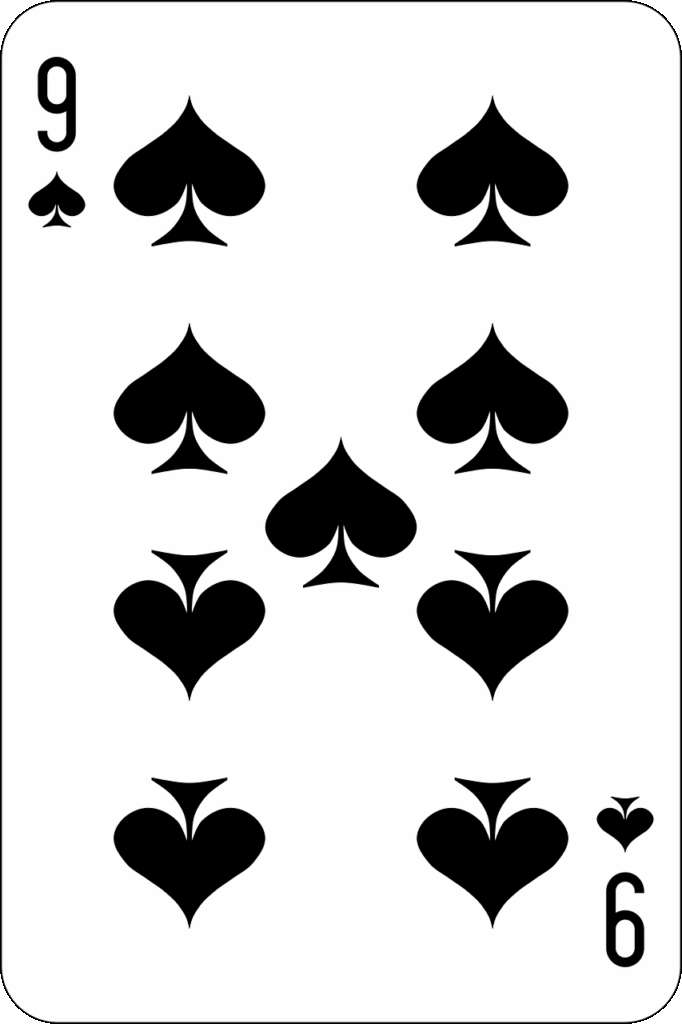
12. **Nine on the Field: Power Plays and Strategic Formations in Sports** In the thrilling arenas of competitive sports, the number nine isn’t just a random digit; it’s a designation of pivotal roles, a marker of team structure, and a cornerstone of game rules. Its recurring presence in various disciplines highlights its practical significance in defining positions, dictating game length, and even influencing team strategy. The number nine truly performs as a critical element in the architecture of athletic competition.
Baseball, America’s favorite pastime, offers a compelling illustration of nine’s omnipresence. A standard game is meticulously structured over nine innings, each providing a defined segment of play where teams vie for dominance. Furthermore, each baseball team fields nine players in its starting lineup, with the number nine traditionally representing the right fielder’s position. This consistent numerical structure underscores how nine fundamentally shapes the game’s duration and on-field dynamics.
In the global phenomenon of association football (soccer), the number 9 shirt carries immense prestige and responsibility. Traditionally, and since at least the 1950s, this iconic jersey number is bestowed upon the team’s center-forward or striker—the primary goal-scorer. It symbolizes their crucial role in offensive plays and their expected ‘performance’ in converting opportunities into points. This designation clearly signals the wearer’s importance and impact on the game’s outcome.
The rugged world of rugby also leans on the number nine to define key player roles. In rugby union, the scrum-half, a vital link between the forwards and the backs, typically wears the number 9 jersey. Similarly, in rugby league, the hooker, a central figure in scrums and responsible for initiating many attacking plays, is generally assigned number 9. These examples demonstrate nine’s pervasive influence in specifying crucial positions across diverse sports, consistently signifying roles of high impact and strategic importance.
13. **Nine in Our Daily Narrative: Literature, Idioms, and Everyday Intrigue** The number nine weaves itself into the fabric of our everyday lives, not just through abstract mathematics or scientific facts, but as a compelling character in our stories, sayings, and common observations. It populates literature, gives color to our idioms, and even forms the backbone of familiar systems, demonstrating its versatile ‘performance’ as a constant companion in human expression and organization. This integration makes nine profoundly relatable, a number that truly lives among us.
Literature, in particular, has long harnessed the symbolic power of nine. Dante Alighieri’s epic “Divine Comedy” famously structures Hell into nine distinct circles, each representing a different sin and level of punishment. This powerful imagery uses nine to delineate a profound moral and spiritual journey. Even in more contemporary art, The Beatles, with their experimental track “Revolution 9,” showcased the number’s association with innovation and pushing artistic boundaries, underscoring its inspirational capacity.
Our language is spiced with idioms that feature the number nine, enriching our communication with familiar, evocative phrases. To be “dressed to the nines” means to be impeccably and stylishly attired, suggesting the highest possible standard of presentation. The popular saying that “a cat has nine lives” speaks to the animal’s remarkable resilience and ability to survive perilous situations, attributing an almost mystical durability to them. These expressions highlight how nine permeates our conversational landscape.
Beyond idioms, nine holds practical relevance in unexpected places. The term “K-9,” for instance, is a phonetic play on “canine” and is widely used in many U.S. police departments to denote units working with police dogs. This clever linguistic twist demonstrates how nine contributes to everyday codes and designations. From literary masterpieces to casual expressions and practical naming conventions, nine’s presence is a testament to its dynamic role in the human experience.
14. **The Unseen Threads: Nine’s Embrace of Magical Phenomena** The number nine, with its deep-seated mathematical properties and cultural resonance, often veers into the realm of the mystical, fueling fascinating mathematical magic tricks and superstitions that hint at an underlying, almost magical order. Its unique characteristics allow it to perform seemingly impossible feats, captivating minds and sparking wonder in those who encounter its numerical quirks. This capacity for enchantment solidifies nine’s place as a truly intriguing digit.
Many mathematical magic tricks possess an uncanny connection to the number nine, largely due to its singular properties within the decimal system. One classic example is that any number, when the sum of its digits is subtracted from it, will always result in a multiple of nine. Take 41, subtract 5 (4+1), and you get 36, a multiple of nine. This consistency allows for impressive ‘mind-reading’ tricks where the magician can deduce a number based on this underlying numerical behavior.
Another popular trick leverages nine’s unique role in digit manipulation. If you take any three-digit number and subtract the same number with its digits reversed, the result will always be a multiple of nine. For example, 723 minus 327 equals 396, which when its digits are added (3+9+6) equals 18, and 1+8 equals 9. This inherent pattern provides a reliable mechanism for creating baffling numerical illusions, consistently pointing back to nine.
These fascinating properties of nine, where every multiplication of nine by a non-zero integer leads back to a digital root of nine, or where differences between transposed numbers are always multiples of nine, make it a cornerstone of numerical mysticism. It’s almost as if the number itself is performing an elaborate trick, consistently revealing its signature. These “magical phenomena” are not supernatural, but rather elegant demonstrations of the profound, often hidden, order embedded within our base-10 number system, driven by the unique ‘performance’ of the number nine.
From the ancient scribes who first etched its form to the cutting-edge tech engineers who rely on its precision, the journey through the world of the number nine has been nothing short of extraordinary. We’ve peeled back the layers of history, marveled at its mathematical prowess, and explored its vibrant presence in science, culture, religion, music, and sports. Nine isn’t just another digit; it’s a testament to the intricate patterns and profound meanings that lie hidden within the seemingly simple realm of numbers. It’s a symbol of completion, a beacon of wisdom, and a silent orchestrator of countless systems that define our world. So, the next time you encounter the number nine, pause for a moment. Remember the depth, the magic, and the undeniable power it holds. It’s a number that truly conquers rough terrain, not with wheels, but with its sheer, unwavering influence across every conceivable landscape of human endeavor and understanding. Prepare to have your perspective on this familiar digit irrevocably transformed, as we have truly uncovered the true might and mystique of the number nine, a mathematical superstar truly worthy of our undivided attention.


